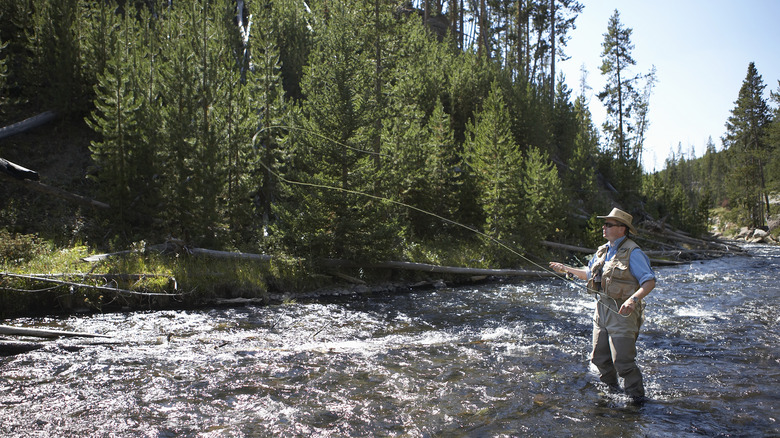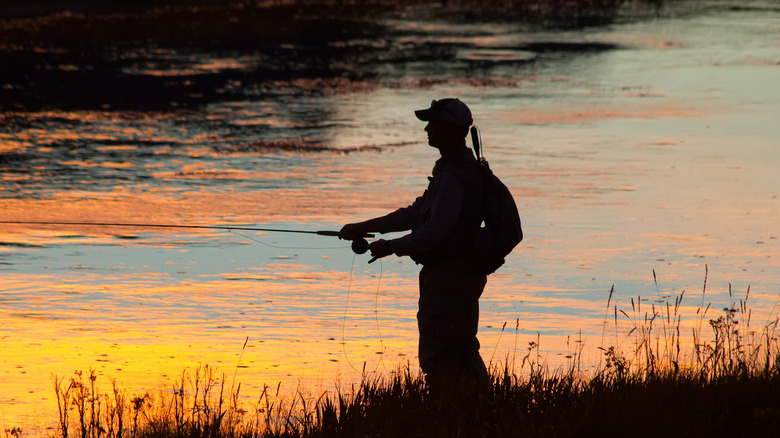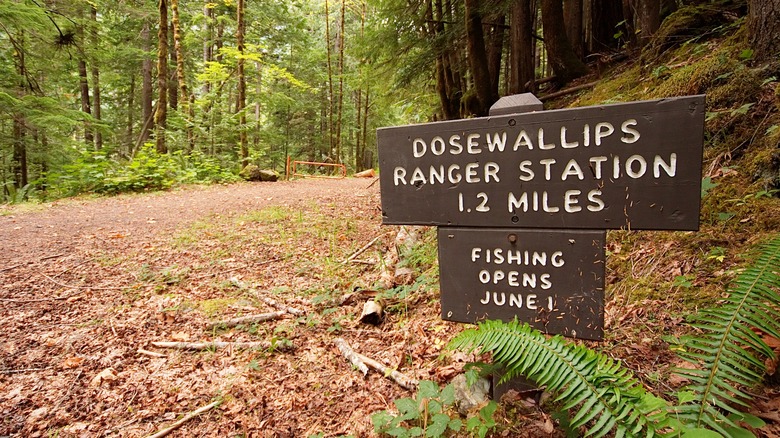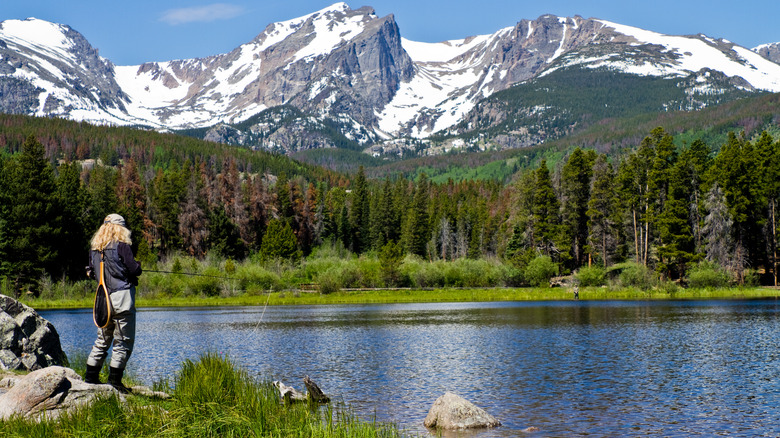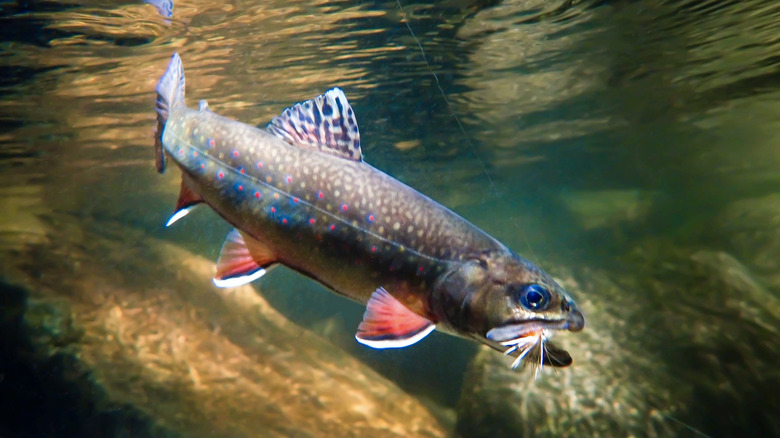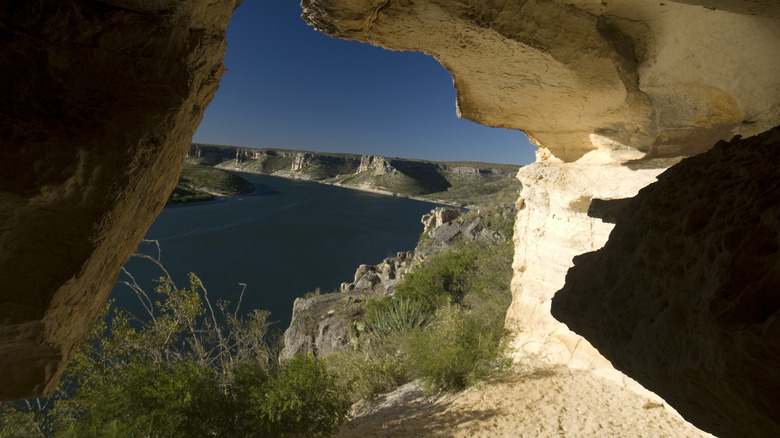The Best National Parks For Freshwater Fishing
Fishing is a favorite pastime for many outdoor enthusiasts, as is visiting national parks. Today, the U.S. National Park Service (NPS) maintains 63 national parks scattered across 31 states and two territories. Additionally, there are more than 400 total park units maintained by the NPS including National Recreation Areas, National Lakeshores, National Rivers, and more. Each of the 50 states has some sort of park unit within its boundaries. Many of these national parks offer a wide array of activities you might not know about, including incredible freshwater fishing access. These angling opportunities can be an added activity for those visiting park units for camping or other outdoor recreation, or the primary reason anglers visit a specific park.
213 national park units currently offer recreational fishing opportunities. These are found throughout the states and territories, so it is a good idea to check the NPS map of parks that offer fishing before planning your next trip to a national park. However, there are a handful of national parks that should be added to your bucket list if you are passionate about freshwater fishing due to the myriad of angling opportunities they present to visitors.
Yellowstone National Park is home to a wide range of fish species
Yellowstone was designated as the first national park in 1872 and has been attracting anglers ever since. This park is massive, covering over two million acres throughout northwest Wyoming and just across the border into Montana. Within this parcel of land is a multitude of rivers and streams, including the Madison and Yellowstone rivers. The park also contains numerous ponds and lakes — the largest and most notable is Yellowstone Lake. Most of these waterways offer angling access during some portions of the year.
Not only do visiting anglers have a variety of locations they can fish within Yellowstone National Park, there are also a variety of species they can target. Several of these species are native to the waters of Yellowstone, including cutthroat trout and arctic grayling. However, popular species such as brook trout, rainbow trout, lake trout, and brown trout were all introduced to Yellowstone.
Fishing within Yellowstone National Park is a bit more involved than just picking a spot and choosing the best bait. As is the case in most national parks, there are a number of regulations in place to protect the fishery. Anglers planning to visit and fish Yellowstone should check the park's fishing information page for legal access points, season, regulations, and restrictions ahead of time.
Olympic National Park offers a variety of fishing options
Covering nearly a million acres of the northwest corner of Washington state, Olympic National Park is not only massive, it is incredibly diverse. In fact, it is one of the relatively few national parks that offer both freshwater and saltwater fishing. Even within the realm of freshwater fishing, Olympic National Park offers plenty of options. According to the National Park Service, there are 800 lakes and over 4,000 miles of rivers and streams within the park which fishing enthusiasts can access.
In those waters swim a plethora of freshwater fish species; there are actually three dozen native and non-native species found in the park. Among the most popular native species to target are steelhead trout and cutthroat trout. The rivers and streams in Olympic National Park are also home to the federally threatened bull trout, although fishing for them is prohibited. Popular non-native species anglers will encounter in the park include largemouth bass, yellow perch, and brook trout. Before heading out to fish in Olympic National Park, be sure to download the park's fishing brochure so as to be clear on rules, regulations, seasons, and accessible areas.
Rocky Mountain National Park is popular for fly fishers
Colorado has long been one of the most popular destinations for trout fishermen, so it's not a surprise that Rocky Mountain National Park is among the most utilized national parks for seasoned anglers. The four main species of trout found within the park's dizzying array of rivers, lakes, and streams are rainbow, brown, brook, and cutthroat – each of which are particularly popular targets from fly fishers.
The Colorado River, which actually begins within Rocky Mountain National Park, is perhaps the best-known of all the waters in the park. However, there is a multitude of creeks, streams, and lakes that are well worth exploring. To get to many of them, you will indeed have to explore. In fact, many of the more popular waters are fairly remote, which is why many anglers plan their trips as more or less a hiking/fishing combination adventure, with perhaps some solitary camping thrown in as well.
If you are planning a trip to Rocky Mountain National Park, be aware that the park's waters are broken down into catch-and-release, catch-and-keep, and closed categories. The park's fishing page outlines each designation, as well as their rules and regulations.
Great Smoky Mountain National Park has simple fishing regulations
Straddling the border between North Carolina and Tennessee, the Great Smoky Mountain National Park takes in just over half a million acres of its namesake mountain range. It also contains nearly 3,000 miles of creeks and streams. Trout are found through a good portion of those streams and are by far the most popular fish for anglers visiting the Smoky Mountains. Rainbow, brook, and brown trout are all found in catchable numbers and targeted by both fly and spin fishers. Smallmouth bass are also present in many of the creeks and streams and are a popular target as well.
When it comes to regulations, Great Smoky Mountain National Park has perhaps the most simple and straightforward set of rules of any national park. Fishing is allowed on all streams in the park every day of the year. Given the remoteness of some stretches of streams, you should expect a bit of a walk or hike depending on where you hope to fish. Legal fishing times are 30 minutes before sunrise and 30 minutes after sunset.
Amistad National Recreation Area has unparalleled shore fishing access
Unlike the other parks listed, trout are not the primary species anglers pursue when visiting Amistad National Recreation Area. In fact, there are no trout swimming in the waters of this park. Rather, anglers travel to the Texas/Mexico border in search of bass. Big largemouth bass, in particular, are the goal of many who fish Lake Amistad. However, this sprawling, deep, clear impoundment is also home to a variety of other species, including white bass, striped bass, smallmouth bass, and catfish.
Those heading to Amistad National Recreation Area will find ample angling opportunities, as almost the entirety of the northern shore of Lake Amistad is bounded by the NRA, giving enthusiasts unparalleled shore fishing access not only to the lake, but also stretches of the Rio Grande, Devil's, and Pecos rivers, as well as numerous smaller creeks and streams. There are also several boat ramps and areas where you can launch paddle craft to access the lake and adjacent rivers.
